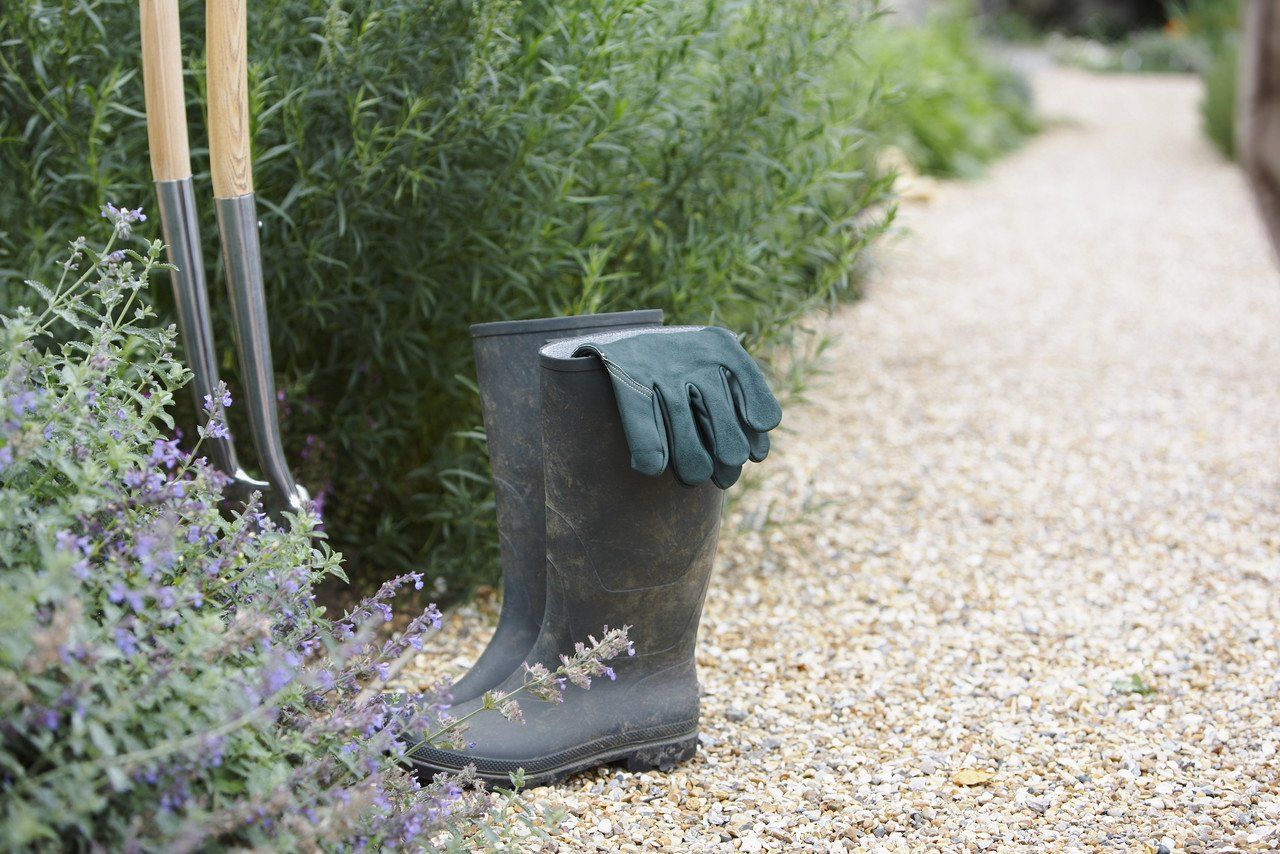Backyard Privacy Ideas: How to Block Views and Reduce Noise
Backyard privacy does not mean sacrificing style and comfort. Simple backyard privacy ideas like incorporating tall fences, dense evergreen plantings, and strategic placement of outdoor structures like gazebos can significantly enhance backyard privacy. A well-designed private backyard not only provides a comforting space but can also significantly boost your property’s value and curb appeal, all while offering a greater sense of security. Having a private backyard space is a dream for many homeowners. It’s where you can unwind, entertain, or simply enjoy nature without feeling exposed. In this Redfin article, we’ll explore a variety of effective backyard privacy ideas that can help you create your perfect personal space, no matter if you’re in Boulder, CO, or Fort Worth, TX.
1. Use plants to create natural privacy
People often associate backyard privacy ideas with unattractive features; however, one of the most natural and beautiful ways to create privacy is with plants. Think beyond a simple fence and consider a living screen. Not only do plants help with making your garden beautiful, but actively shelter your space from unwanted eyes.
Expert tip from The Mulch Mound: A great private outdoor space starts with well-designed mulch beds—they’re not just practical, they’re the foundation of a polished, peaceful yard. Deep, curved mulch beds lined with clean edging help define zones and guide the eye, making your space feel both organized and expansive. Layering tall shrubs and ornamental grasses within those beds adds natural screening without sacrificing style. For extra privacy, tuck seating areas behind mulch-lined plantings or use trellises with vines to soften fencing. Thoughtful mulch use keeps everything low-maintenance while tying together the look and function of your outdoor retreat.
Additional suggestions and ideas for creating a natural privacy wall include purchasing the following:
- Tall shrubs and trees: Fast-growing evergreens like Leyland cypress or arborvitae can quickly create a dense visual barrier. Deciduous trees like maples or oaks offer seasonal privacy and shade.
- Vines on a trellis: Climbing vines like wisteria, trumpet vine, or clematis can rapidly cover a fence, trellis, or pergola, adding a lush, green wall to your space.
- Bamboo: Certain types of bamboo, especially clumping varieties, can grow tall and dense, offering a tropical and effective privacy solution. Just be sure to research the best types for your climate and consider root barriers for running varieties.
2. Add outdoor structures for built-in seclusion
Outdoor structures offer more than just shelter; they can enhance privacy in your outdoor space. These structures provide a framework upon which you can build a more secluded environment. By thoughtfully integrating them into your backyard design, you can create distinct zones that feel intimate and protected from outside views.
Pergolas, gazebos, and even shed walls offer more than just shelter; they can be excellent privacy enhancers for your outdoor space.
Expert tip from Tommy Pollina Landscape: “A great private space doesn’t just block views — it feels calm, tucked away, and thoughtfully put together. We like to blend privacy fencing or masonry walls with natural screening like evergreens, tall ornamental grasses, or layered shrubs. This creates a barrier without making the space feel boxed in. Features like trellises, pergolas, or plant-covered arbors can give you cozy, secluded spots within the yard that still feel open and inviting.”
Consider these structural privacy boosters:
- Pergolas with curtains: Add flowing outdoor curtains to create a flexible, intimate retreat.
- Screened-in gazebos: These create a private outdoor room perfect for dining or lounging, without worry about bugs or prying eyes.
3. Try stylish and strategic privacy screens
Standalone screens crafted from materials like wood, metal, or even repurposed items are perfect for blocking specific sight lines. Beyond their functional benefits, these screens can also serve as stylish additions to your yard’s aesthetic.
Add character with planters or shelving
Consider screens with integrated planters for a living wall effect, or those with built-in shelving to display outdoor decor and lighting, further enhancing their aesthetic and utility. The material choice itself can dictate the style. Aluminum offers a modern edge, while reclaimed wood provides a rustic look.
Use strategic placement to define outdoor zones
When integrating privacy screens, think about their strategic placement to maximize both privacy and visual appeal. Instead of just blocking an undesirable view, consider how a screen can define an outdoor “room” or create a captivating backdrop for a seating area or garden bed. For instance, a series of smaller, complementary screens can be used to create a meandering pathway, subtly guiding the eye while maintaining seclusion. You can also use them to visually separate different zones within your yard, such as a dining area from a lounging space, giving each its own distinct ambiance.
Go portable for adaptable privacy
Portable decorative screens offer incredible flexibility. These can be moved around as needed to provide privacy for impromptu gatherings, block sun glare, or simply refresh the look of your patio. Imagine screens with wheels for easy repositioning, or lightweight foldable designs that can be stored away when not in use. The key is to see these screens not just as barriers, but as dynamic design elements that can transform your backyard into a personalized sanctuary.
4. Choose fencing that adds both beauty and function
Fences and walls are classic backyard privacy ideas that don’t have to be boring. Increasing your backyard privacy can be easily achieved with a tall fence, provided your budget and space permit. With numerous styles and heights available, you’re sure to find one that works for you and your home.
Tip from Veronica Nguyen of Pentagon Fencing:
A great private outdoor space seamlessly blends privacy, beauty, and functionality.” She continues suggesting, “When it comes to fencing solutions, I recommend tall, solid options like Colorbond Fences or Modular Walls for both durability and visual appeal. Modular walls are an outstanding choice. Not only do they offer a sleek, modern appearance, but they also provide excellent acoustic insulation, helping to block out street noise and enhance the feeling of seclusion. Modular walls and Colourbond fences are also highly durable, low maintenance, and come with a variety of stunning colors to suit any home style. Pairing both Colourbond fences or Modular Walls with greenery or vertical gardens softens the structure, creates a resort-like atmosphere, and adds a natural buffer. Strategic layout is key, so using screens or pergolas to section off seating or BBQ areas for a more intimate feel is an ideal combination. Additionally, integrating up/down LED lights will cast a soft glow along the surface of modular walls or slat fences, creating a sleek, modern look while highlighting textures and finishes. These are perfect for evening ambience and curb appeal.
Other stylish fencing options include:
- Wood fences: Stain or paint them to match your home, or add lattice or custom cutouts for personality.
- Gabion walls: Wire cages filled with rock or brick offer a modern, industrial look and help reduce sound.
- Corrugated metal panels: Durable and edgy, these are low-maintenance and make a striking statement.
- Combine fences with greenery: Add vines, planters, or vertical gardens to soften the structure and create a resort-like vibe. Strategic lighting can also highlight textures and boost nighttime curb appeal.
5. Incorporate elements to reduce noise
Achieving sound privacy in your backyard is just as important as visual privacy for creating a private retreat. Unwanted noise from neighbors, traffic, or urban environments can disrupt your peace and make it difficult to relax or entertain outdoors. While physical barriers like fences can block some sound, they often aren’t enough to create a quiet atmosphere. Strategically incorporating elements that absorb, block, or mask sound, you can transform your backyard.
Use white noise:
One of the most effective ways to enhance sound privacy is by introducing white noise. The soothing sound of water features can be incredibly effective at masking undesirable external noises. Fountains, with their gentle trickling sounds, can create a calming ambiance and help to muffle distant sounds. For more substantial noise reduction, consider larger water features like waterfalls or bubbling rock formations, which produce a greater volume of white noise. Joe Sexton from Inch Calculator suggests that incorporating water features can elevate the ambiance by masking noise and creating a relaxing retreat. Joe writes, “Elevate the ambiance by incorporating water features or outdoor speakers to mask noise and create a relaxing retreat.”
Layer in natural sound barriers:
Another approach to improving sound privacy involves utilizing dense plantings and thoughtful landscaping. While plants primarily offer visual screening, thick hedges, layered shrubs, and tall ornamental grasses can also help to absorb and diffuse sound waves, creating a quieter environment. Combining these natural elements with other structures can further enhance their sound-dampening capabilities. Veronica Nguyen of Pentagon Fencing recommends pairing fences, like Colorbond Fences or Modular Walls, with greenery or vertical gardens, noting that this combination softens the structure and adds a natural buffer. Additionally, elements like gabion walls, which are made from wire cages filled with rocks or bricks, are excellent at providing both visual privacy and sound dampening due to their dense material.
Reposition furniture and structures:
Finally, consider the strategic placement of outdoor structures and furniture to help create a more sound-protected area. Modular walls, for instance, are highlighted for their excellent acoustic insulation, which helps to block out street noise and enhance the feeling of seclusion. Draping a pergola with outdoor curtains can offer flexible privacy, allowing you to close them for an intimate atmosphere, which can also help to muffle sounds. Similarly, a screened-in gazebo creates a private outdoor room ideal for dining or lounging without concerns about external noise. By layering various sound-dampening techniques, you can effectively minimize disruptions and maximize the peace and quiet in your backyard.
A final note on backyard privacy ideas
As we’ve explored, creating a private backyard doesn’t mean sacrificing style or comfort. By thoughtfully integrating features like tall fences, dense evergreen plantings, and strategically placed outdoor structures, you can enhance your backyard’s privacy. Well-thought-out backyard privacy ideas provide a comforting space for relaxation and enjoyment. A home is meant to be your sacred area, and with these ideas, you’re on your way to creating the peaceful outdoor space you’ve always dreamed of.
Source:
Redfin
Dusty Rhodes Properties is the Best Realtor in Myrtle Beach! We do everything in our power to help you find the home of your dreams. With experience, expertise, and passion, we are the perfect partner for you in Myrtle Beach, South Carolina. We love what we do and it shows. With more than 22 years of experience in the field, we know our industry like the back of our hands. There’s no challenge too big or too small, and we dedicate our utmost energy to every project we take on. We search thousands of the active and new listings from Aynor, Carolina Forest, Conway, Garden City Beach, Longs, Loris, Murrells Inlet, Myrtle Beach, North Myrtle Beach, Pawleys Island, and Surfside Beach real estate listings to find the hottest deals just for you!
Share





